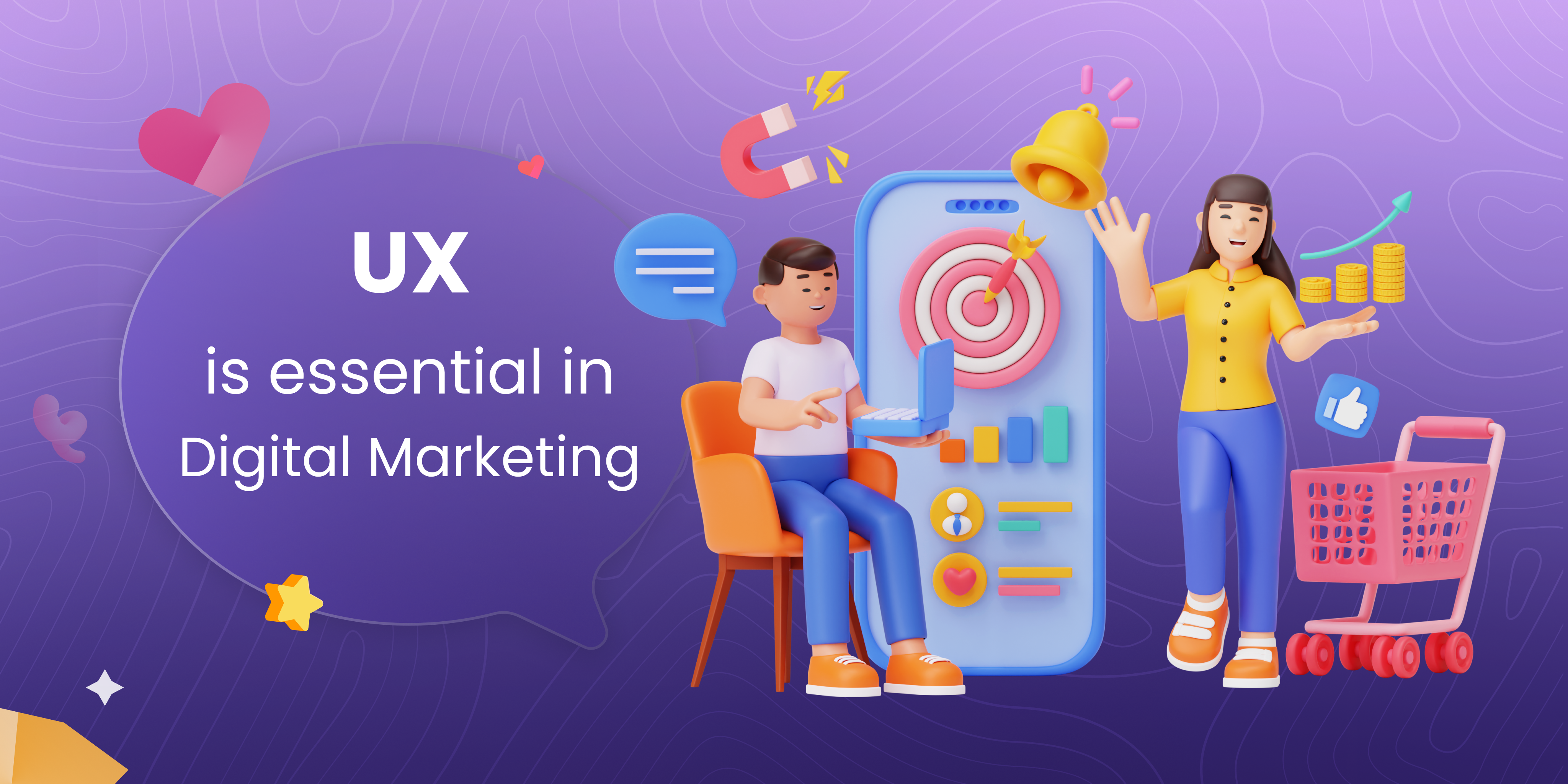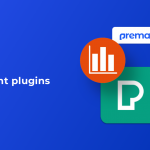learning
What Makes UX Crucial in Digital Marketing.

What attracts visitors to your website? What keeps them engaged and interested in exploring further? While there are various factors at play, the primary element that captures visitors’ attention is the comfort, ease, and overall experience they encounter while browsing. Within seconds, people form an impression of whether they enjoy being on a site.
Yes, mere seconds! It’s crucial to factor this into your digital marketing strategy when creating a business profile. Therefore, ensuring a seamless and enjoyable user experience (UX) is paramount for any website visit.
Why is this important? That’s precisely what we’ll delve into today. This article aims to elucidate the significance of UX in digital marketing. So, without further ado, let’s dive in, shall we? But first, let’s establish a clearer understanding of what UX entails.
UX in a Nutshell.
You’re already familiar with the term UX, short for User Experience. But what exactly does it entail? In the realm of digital marketing, UX encompasses two primary facets:
- Crafting the initial impression through the product landing page.
- The interface of the product itself.
The domain of UX is vast, comprising myriad small and large elements that collectively shape each user’s overall experience. Put simply, UX refers to how users perceive your website, business profile, or the functionality of your products and services.
It encapsulates the entirety of the interaction between service users and providers, and it continually evolves alongside shifting user preferences and demands. However, it’s essential to acknowledge that the dynamics of this interaction are subject to frequent change over time.
What is the significance of UX in Digital Marketing?
We won’t dwell on stating the obvious importance of making customers feel appreciated and providing top-notch experiences for your business. Instead, let’s delve into the current importance of UX within digital marketing. Below are some excellent advantages of prioritizing good UX in the realm of digital marketing.
1. Enhanced Satisfaction for the Customers.
Today’s consumers are both informed and discerning, yet they’re also increasingly impatient. A sluggish website is a surefire way to lose their interest. Even if you have a fantastic digital marketing strategy in place, it’s all for naught if your content isn’t presented in a user-friendly manner. Visitors won’t stick around if your page takes ages to load or if they’re bombarded with overly flashy visuals. And if they struggle to locate your call-to-action buttons, you can kiss those potential sales goodbye.
What do you believe will contribute to crafting the most extraordinary experience for your customers? Do you perceive it as overly challenging? Not!
When crafting your website or product landing pages, prioritize just two key aspects:
- User-friendly navigation
- Appealing visuals
Improving navigation on your website significantly enhances your customers’ experience. A slow-loading page frustrates visitors, prompting them to leave quickly. As a business owner, your primary objective is to convert visitors into buyers, achieved by attracting them with various marketing messages and content. However, achieving this is challenging if your website isn’t easy to navigate.
Moreover, the visual appeal of your website also influences user experience. Choosing marketing content that enhances your site’s attractiveness is crucial. People enjoy exploring visually appealing websites, so crafting a unique and seamless experience yields positive outcomes.
User experience forms the cornerstone of any digital marketing strategy, aiming to attract viewers who convert into customers. Ensuring a user-friendly website fosters satisfaction and happiness among visitors, translating into swift customer conversions.
Conversely, a poor browsing experience can severely impact your business, risking reputation and customer loyalty. A well-designed user experience speaks volumes about your brand, demonstrating an understanding of customer needs and delivering exceptional experiences.
Ultimately, customers don’t just buy products for their quality; their browsing experience also significantly influences their purchasing decisions, emphasizing the importance of prioritizing user experience in your digital marketing efforts.
2. Improved Conversion Rate.
If you prioritize providing users with an exceptional experience, your conversion rate will naturally see an uptick. In today’s competitive landscape, merely offering an average experience isn’t sufficient.
Your customers must encounter something memorable and distinctive each time they engage with your platform. This, in turn, can significantly boost your conversion rate.
Curious about how this mechanism operates? Allow me to elucidate.
By crafting a user experience (UX) tailored to your website, you gain insight into the psychology and preferences of your audience. Consequently, you can devise a marketing strategy that not only captivates visually but also prioritizes user-friendliness, enabling visitors to immerse themselves in your platform.
Such concerted efforts are often appreciated by users, leaving a lasting positive impression. Here are some pointers to enhance your UX and consequently improve your conversion rates.
3. Well-positioned CTA Button.
To ensure sales from your website, it’s crucial to have a prominently positioned call-to-action (CTA) button. Without it, even the most compelling products or offers may go unnoticed by visitors, who tend to leave pages quickly. Placing a visible CTA button directly in front of viewers’ eyes increases the likelihood of engagement and conversion. Don’t risk losing potential sales due to a hidden or poorly placed CTA—make sure it’s both effective and easy to find.
4. Speed of Browsing.
As previously stated, a website with slow loading times is a major turnoff for visitors. According to a report by Google, even a mere 2-second delay in webpage loading could spike the bounce rate by up to 32%, diminishing visitor engagement and fostering a negative perception of your site.
A lightning-fast website enables users to navigate effortlessly and explore various options. It’s crucial to consistently monitor your page’s performance to ensure optimal speed. Utilize images and videos that won’t compromise your website’s loading speed. This approach will ultimately drive higher conversion rates.
5. Frictionless Navigation.
In addition to speed, it’s crucial to address frictions. Frictions can be just as detrimental as slow loading times. This occurs when your webpage is cluttered with unnecessary elements. Regularly decluttering your webpage is essential to ensure a smooth experience for your buyers. A tidy homepage with minimal distractions enables viewers to focus on what truly matters without being diverted by irrelevant content. Fewer distractions increase the likelihood of viewers purchasing the products they’re interested in, whereas distractions may deter them.
6. Reduced Bounce Rates.
Let’s break it down: Bouncing happens when someone quickly leaves your website after just a glance. And that’s not good for business, right? To sell stuff, you want people to stick around and check out what you offer. But why do they leave so fast? Maybe your website isn’t interesting enough, or they can’t find what they’re looking for, like the buy button.
The key is to make it easy for them to stay and explore. One way is by testing your site before it goes live to see what works best. Your goal is to keep people coming back, which means you need to make your site easy to use and attractive. If you do that, fewer people will leave right away, and more will stick around to see what you have to offer.
7. The site is optimized for mobile user experience (UX).
The extreme availability of smartphones has brought significant changes in browsing. It is expected that about 72.5% of internet users will browse websites via their smartphones only. It is equivalent to 3.7 billion people! A vast portion of the users will access your website from a mobile phone today.
Such a spike in smartphone users is probably due to the comfort and accessibility. People can access their mobile phones any time they want, from wherever they are at that moment. This has made them more inclined to use mobile phones for almost everything they do on a day-to-day basis, including shopping.
You need to make sure that your website loads and previews are good on mobile and tablets.
If the content and pictures of your business profile do not show properly or break down while being seen from a mobile phone, it will hamper the users’ experience by a great deal. They will leave your site immediately, and it will leave you with failures.
That is why it is a must that you make your business page mobile-friendly. Check and recheck your website or business page on all devices before going live with those.
Things to Keep in Consideration While Designing UX For a Website.
Countless websites populate the vast expanse of the internet, presenting fierce competition, particularly within your specific industry. To thrive, your website must distinguish itself amidst this sea of options, ensuring optimal outcomes for your business. This entails providing visitors with an unforgettable experience. Now, let’s explore key considerations for crafting a compelling user experience (UX) for your website.
1. Audience Focus.
When delving into UX design, the initial focus should be on identifying the target audience. Understanding your audience is crucial for delivering an optimal user experience. Familiarizing yourself with their preferences, needs, and dislikes will streamline subsequent steps in the design process.
2. Typography.
Ensuring your content resonates with your intended audience is paramount, isn’t it? Typography plays a crucial role in this endeavor; the choice of font size and color is as significant as the content itself.
Opt for fonts and colors that captivate attention while ensuring readability and comfort. Steer clear of combinations that might strain your audience’s eyes. Popular web fonts like Bodoni, Helvetica, Avenir, and Garamond are widely favored. Incorporating your brand’s colors whenever possible helps solidify brand identity.
3. Informative Product Page.
Someone is showing genuine interest in your products by spending time on your business page. Enhance their user experience by providing comprehensive details about your products directly on your website. Moreover, to efficiently market all your products across various channels, consider creating a product feed. A product feed enables you to share information about multiple products simultaneously, eliminating the need for manual input.
Popular platforms like WooCommerce and Shopify offer plugins to facilitate this process. For instance, if you’re using WooCommerce, the CTX Feed WooCommerce product feed plugin allows you to generate unlimited product feeds effortlessly. This plugin streamlines your workflow, enabling you to create bulk product feeds, ultimately saving you valuable time and effort.
4. Message Clarity.
You should have a clear message on your website, whether it’s about your products or your business. Make sure the message is easy for all viewers to understand by using straightforward language. This will help ensure that everyone can grasp it easily.
5. Strategically Positioned CTA Button.
Indeed, this point has been emphasized previously, yet its significance cannot be overstated. A strategically positioned CTA button is indispensable for ensuring a seamless user experience. Your marketing strategy remains incomplete without it.
6. Creativity.
When crafting the UX for your website, it’s crucial to prioritize innovation. Employing distinctive and imaginative concepts across all aspects of your site enhances user experience, making it more engaging and memorable for visitors.
Summarized:
Providing your website visitors with a distinctive experience can significantly influence your business. Yet, achieving this isn’t a straightforward task.
You may not excel right from the start. Begin with incremental progress, familiarize yourself with your business, and analyze user behavior. Over time, these efforts will guide you toward crafting an exceptional user experience for your website.
Explore Premast for Free PowerPoint template downloads. Additionally, check out the Premast Blog to stay informed about the latest templates and gain design insights from our PowerPoint Experts!
Leave a Reply
You must be logged in to post a comment.



Leave a Reply
You must be logged in to post a comment.